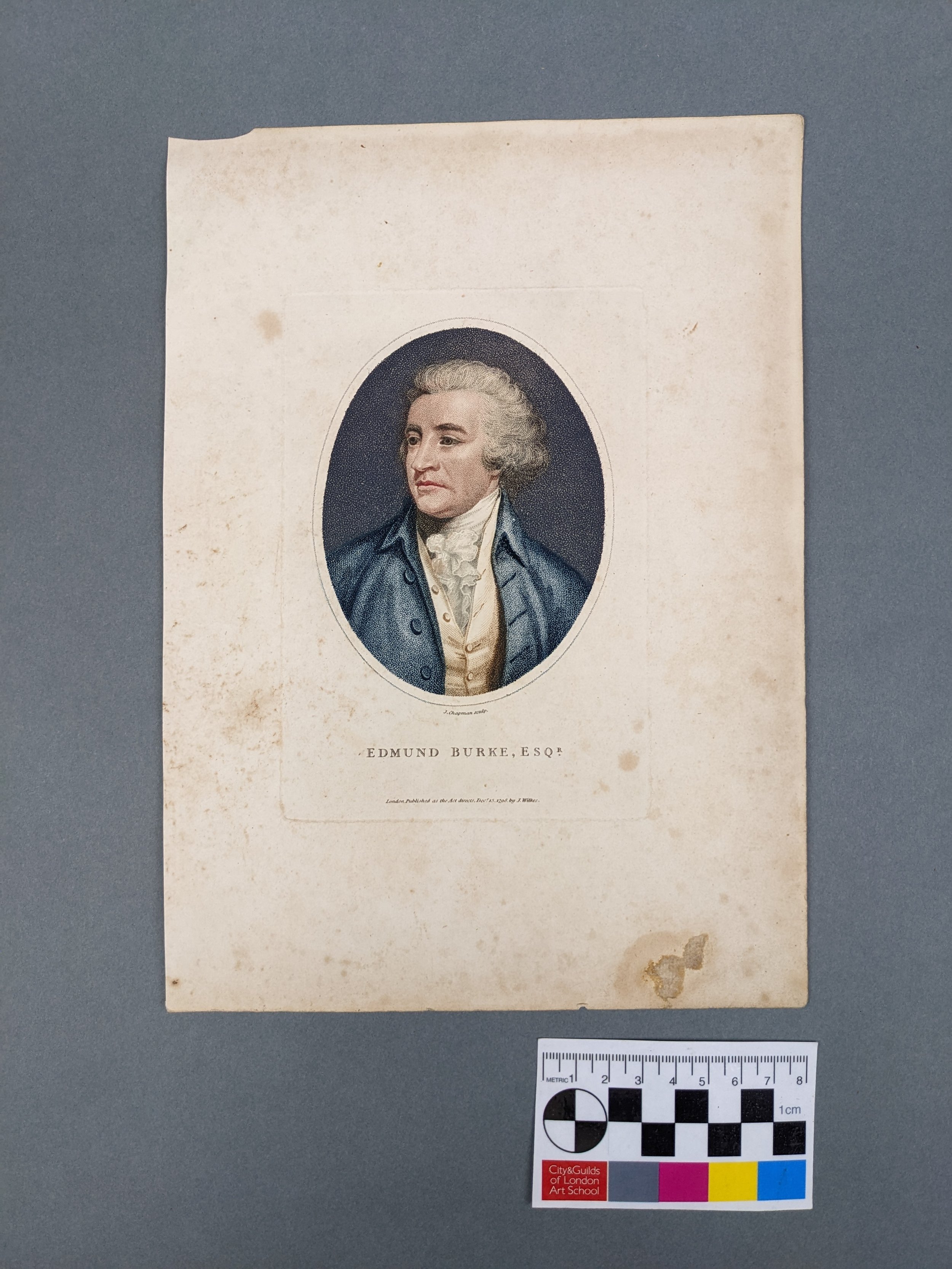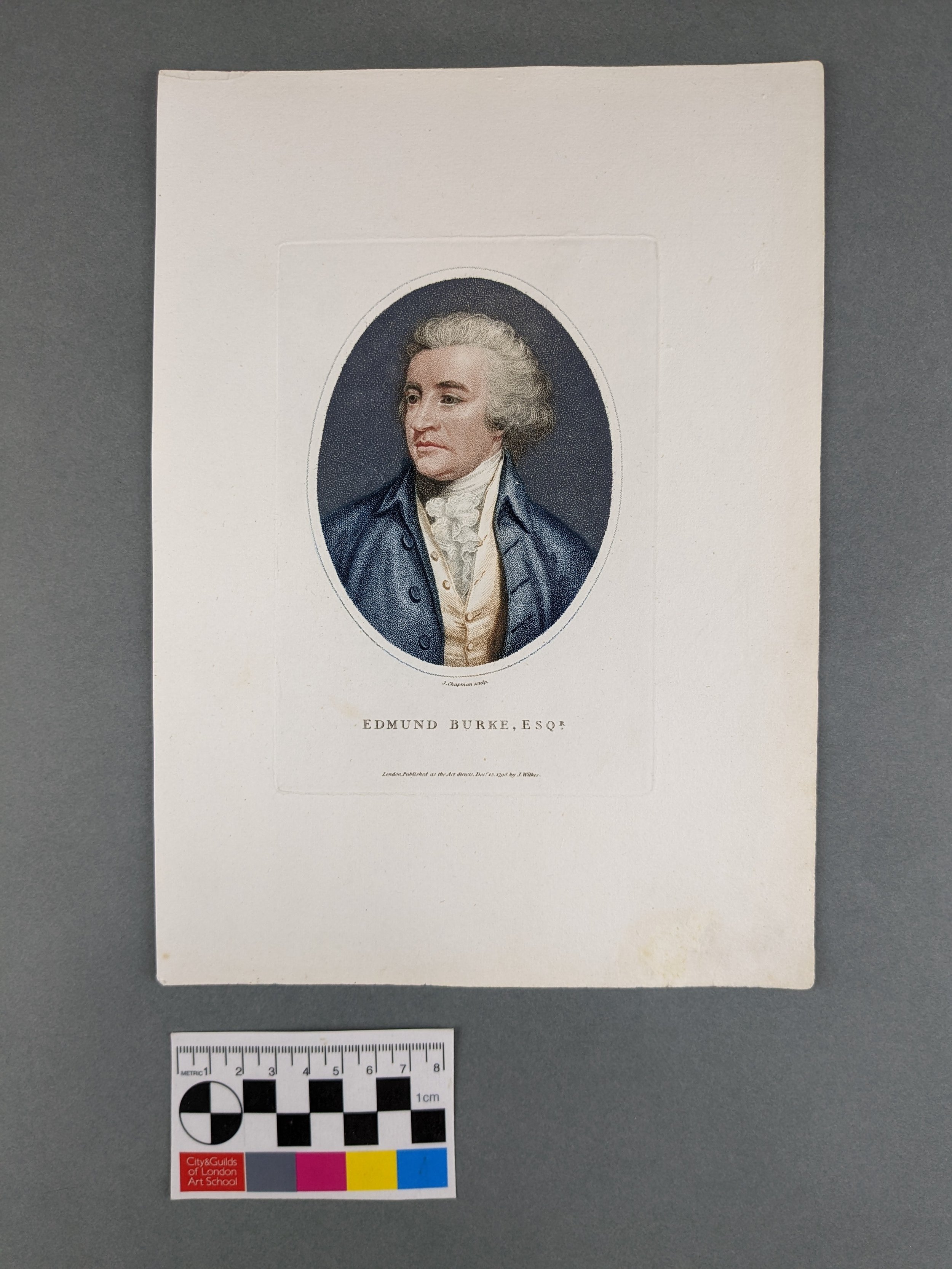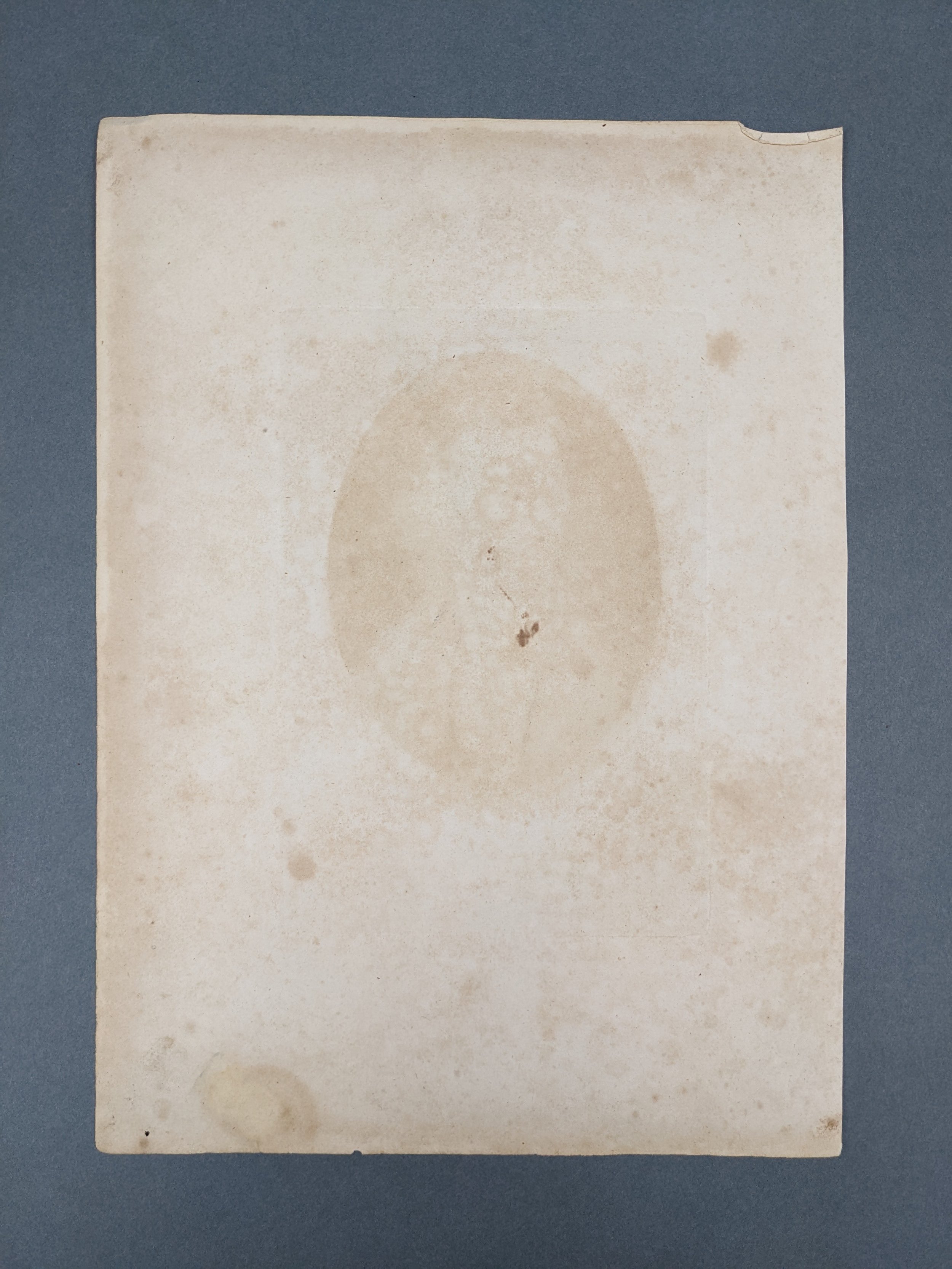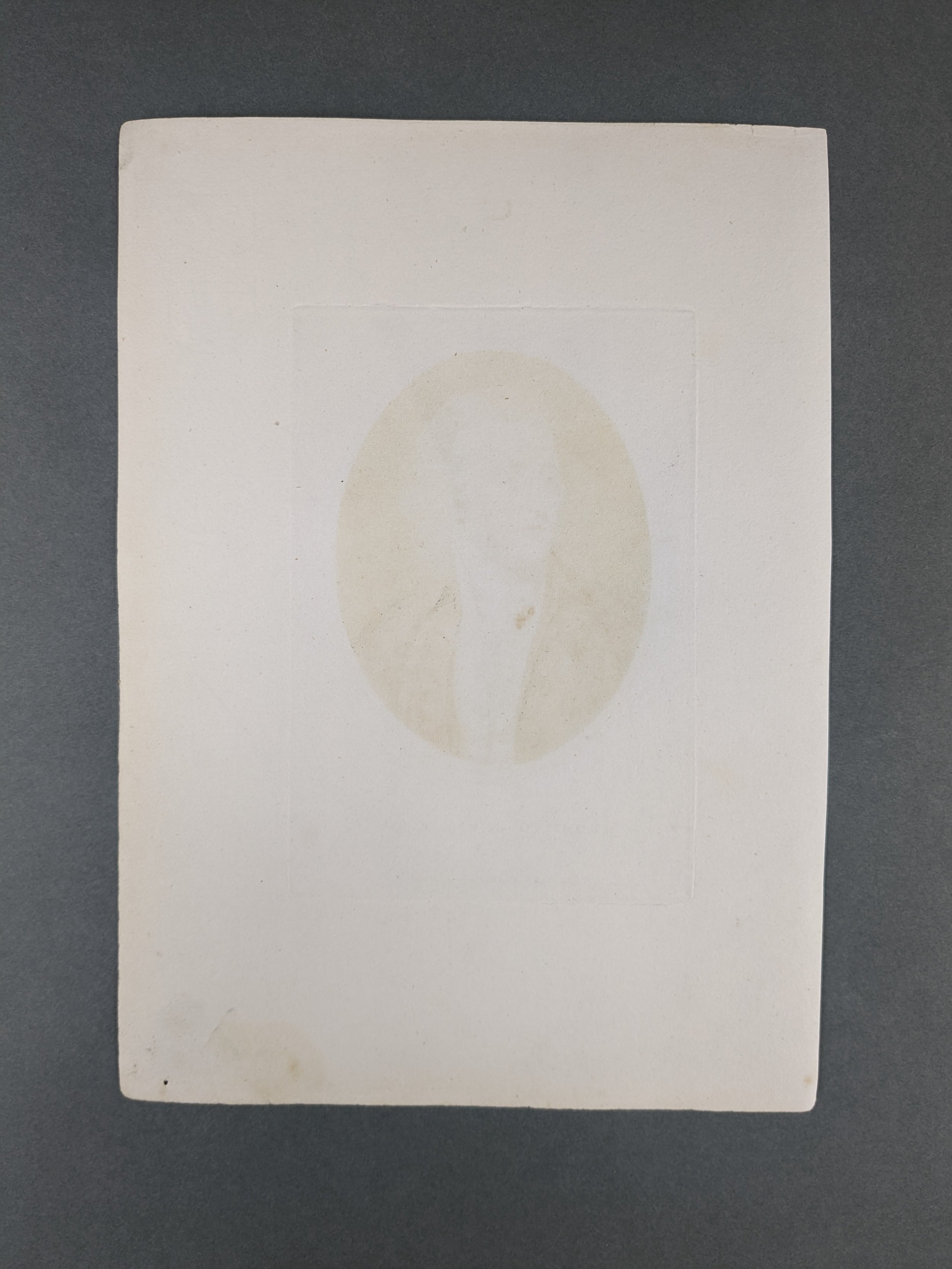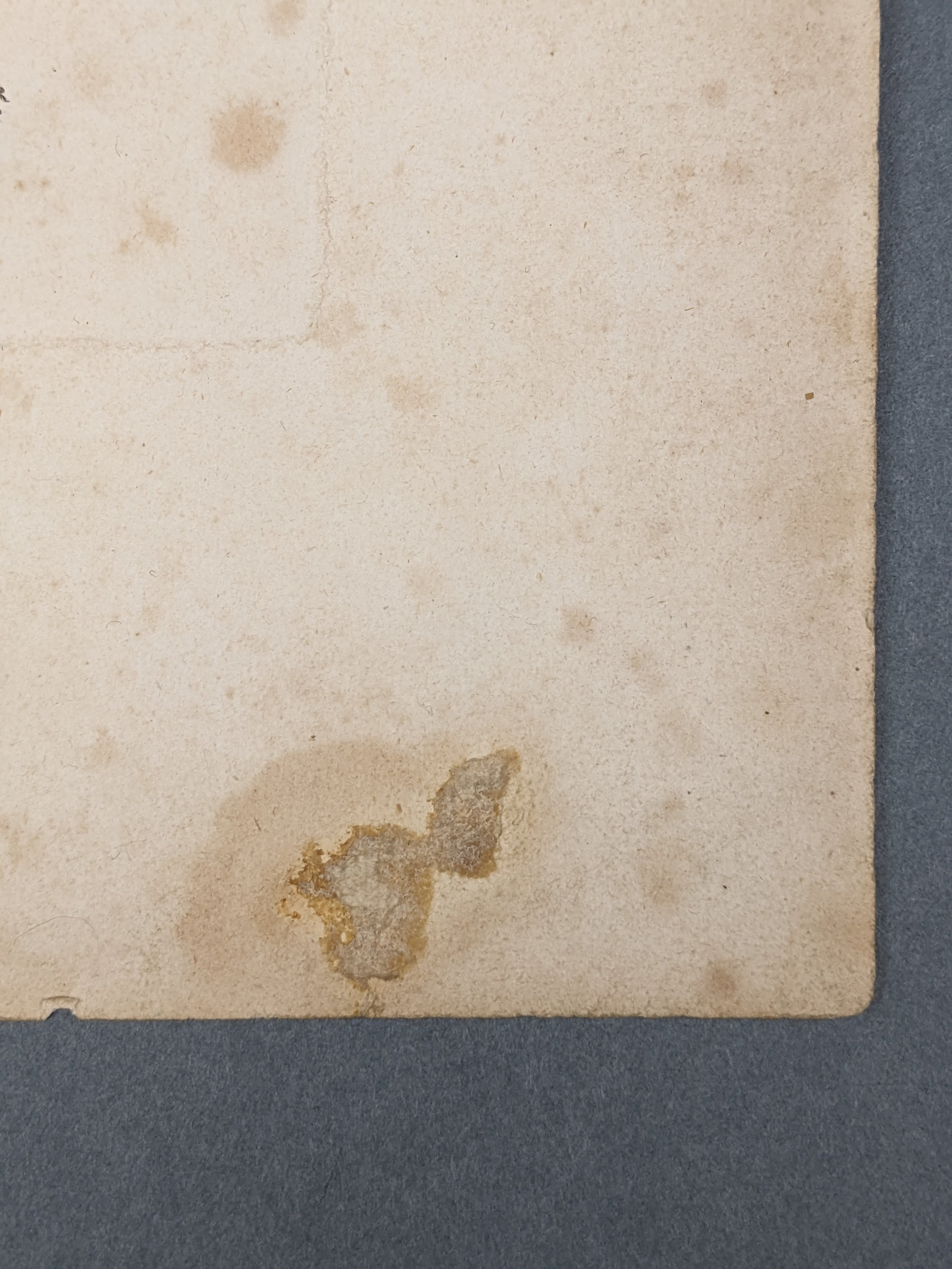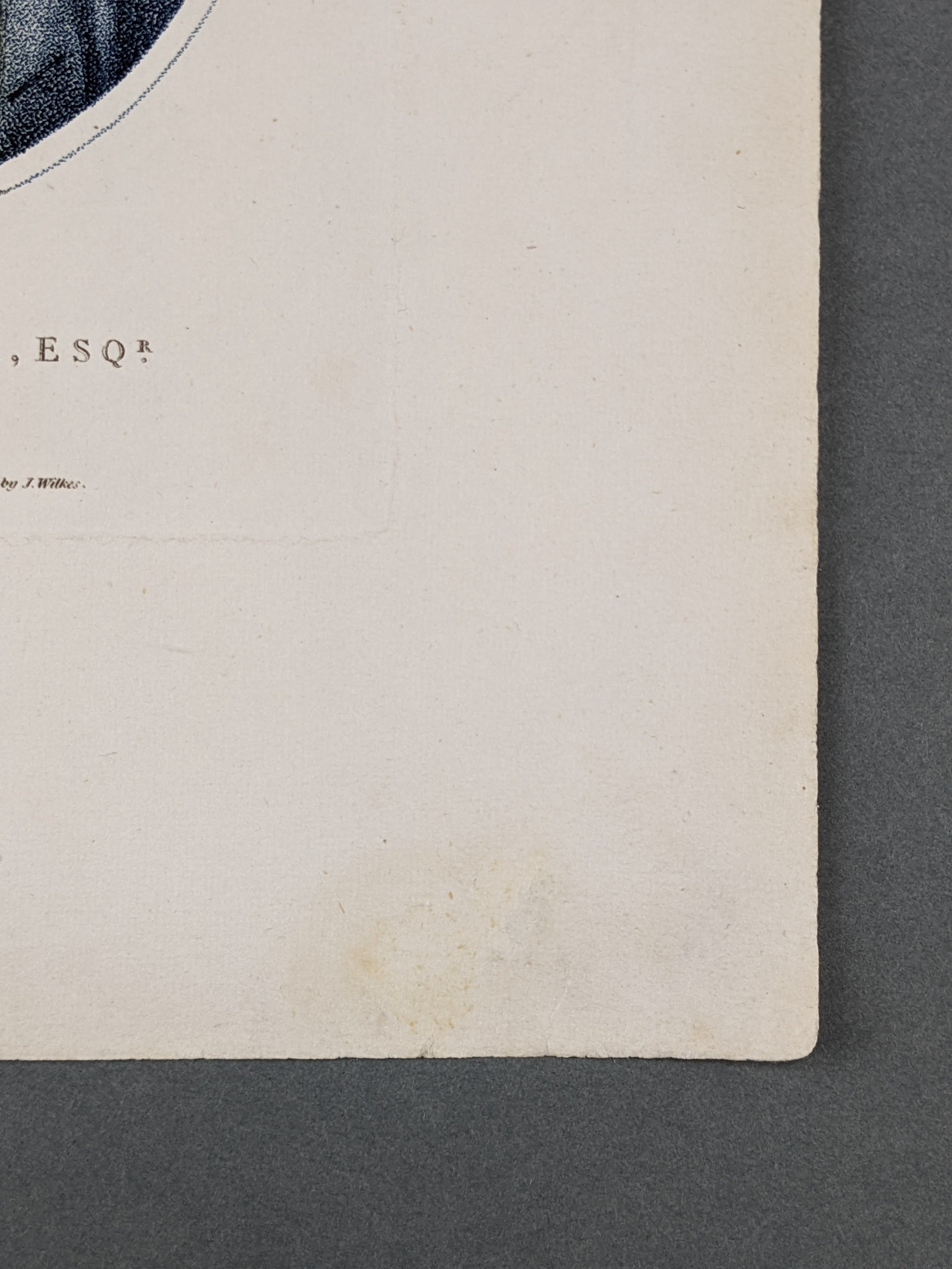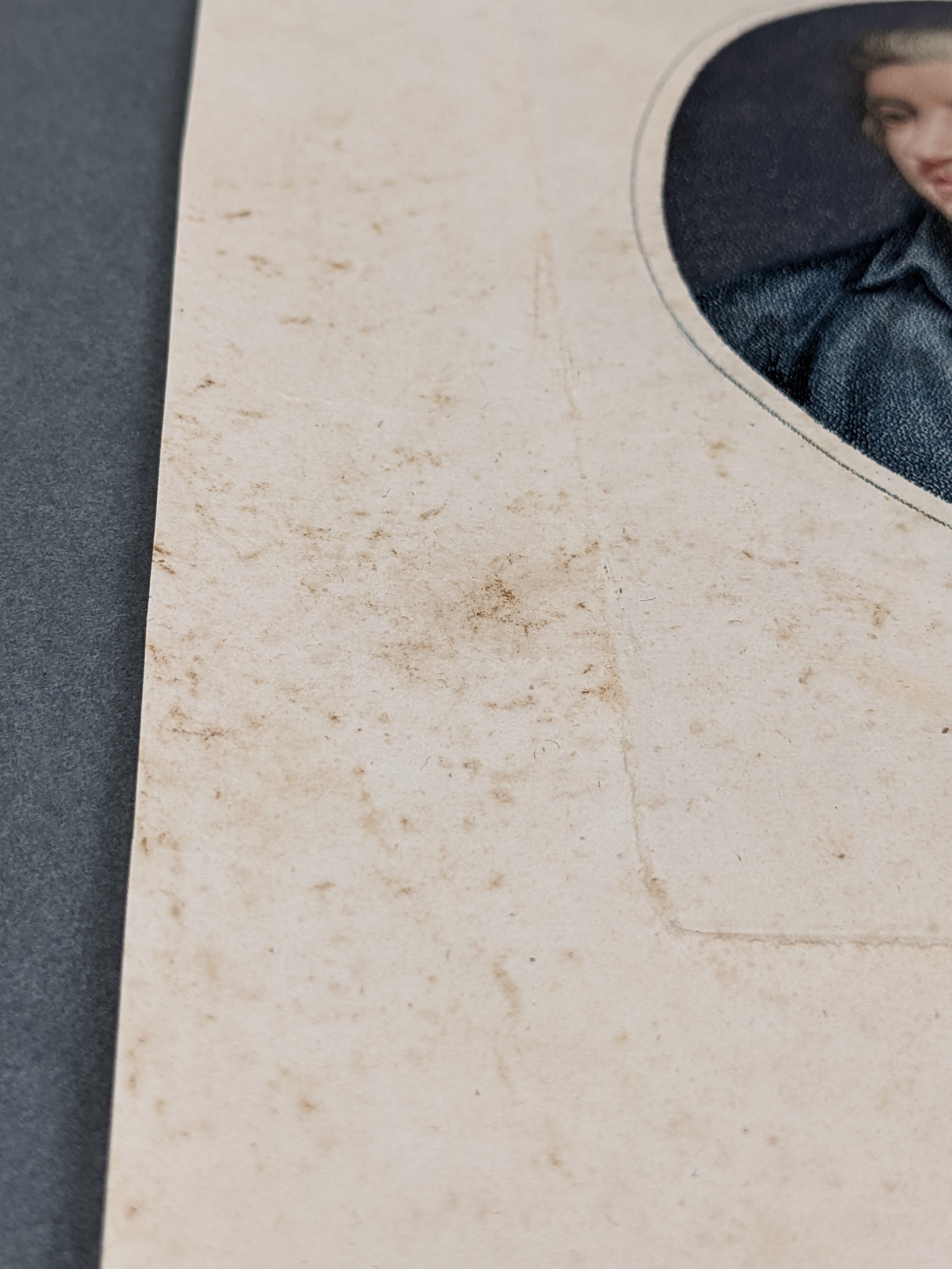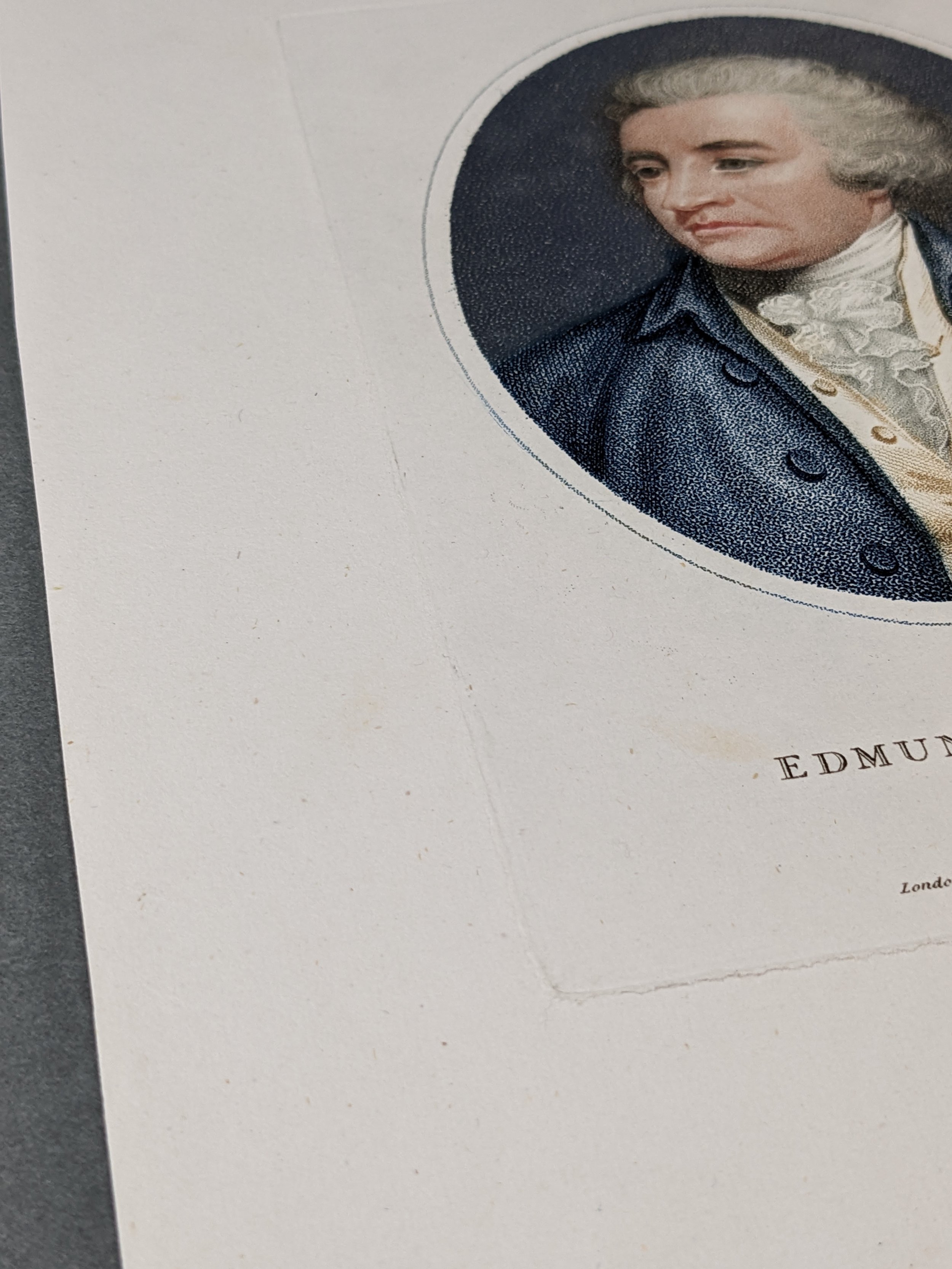1789 À la Poupée Portrait of Edmund Burke
Brief Description:
Stipple engraving of a half-length frontal portrait of the British statesman, Edmund Burke; in oval frame.
The print is done on a medium-weight, handmade wove paper and is hand-coloured using a technique called à la poupée, a largely historic intaglio printing technique whereby a “doll-shaped bundle of fabric [is] used to dab the ink of differing colours into the grooves and dots recessed in the surface of the plate.” (Gascoigne 2004)
Brief Condition Assessment
Discolouration along the paper edge
Light foxing throughout, with a particularly dense area on the left side of the image
Visible oil stain on the bottom right edge of the paper which has an additional layer of skinned paper. It is possible that another paper may have been adhered to the stain and left a skinned layer on top of the stain.
Brief Treatment Description
There were four main stages of remedial treatment for this print:
Dry, mechanical cleaning
Using a soft brush initially to remove loose dirt from the paper surface, followed by a chemical sponge to remove any further ingrained surface dirt.
Aqueous cleaning
The print was washed using a float washing method. First, the print was gently humidified using a fine mist. Then it was placed on the surface of a warm water bath, on a support of a sheet of Japanese paper. This process was done three times, leaving the print on the surface of the water for 1 hour at a time.
Stain removal
The removal of the additional layer of skinned paper on top of the oil stain at the bottom right of the paper was done as a 2-step process.
Wet removal - Whilst the print is still damp, the skinned paper on top of the oil stain has softened and is removed gently using a spatula and tweezer. The additional layer is gently scraped back, then lifted away.
Dry removal - Once the print is dry, any residue of adhesive from the skinned paper was mechanically removed using a scalpel, no. 15 blade, under 10x magnification
Bleaching
The print was bleached using a pH buffered 5% hydrogen peroxide solution. This step of the treatment was done one side at a time, under a fume hood, first by a light spraying, followed by brushing on a light layer of the solution to reduce the risks of hydrogen gas forming inside the paper and to ensure even application. Once both sides of the print have undergone bleaching, the print was left to air dry overnight and washed for 30 minutes the next day to remove any remaining residues of hydrogen peroxide.
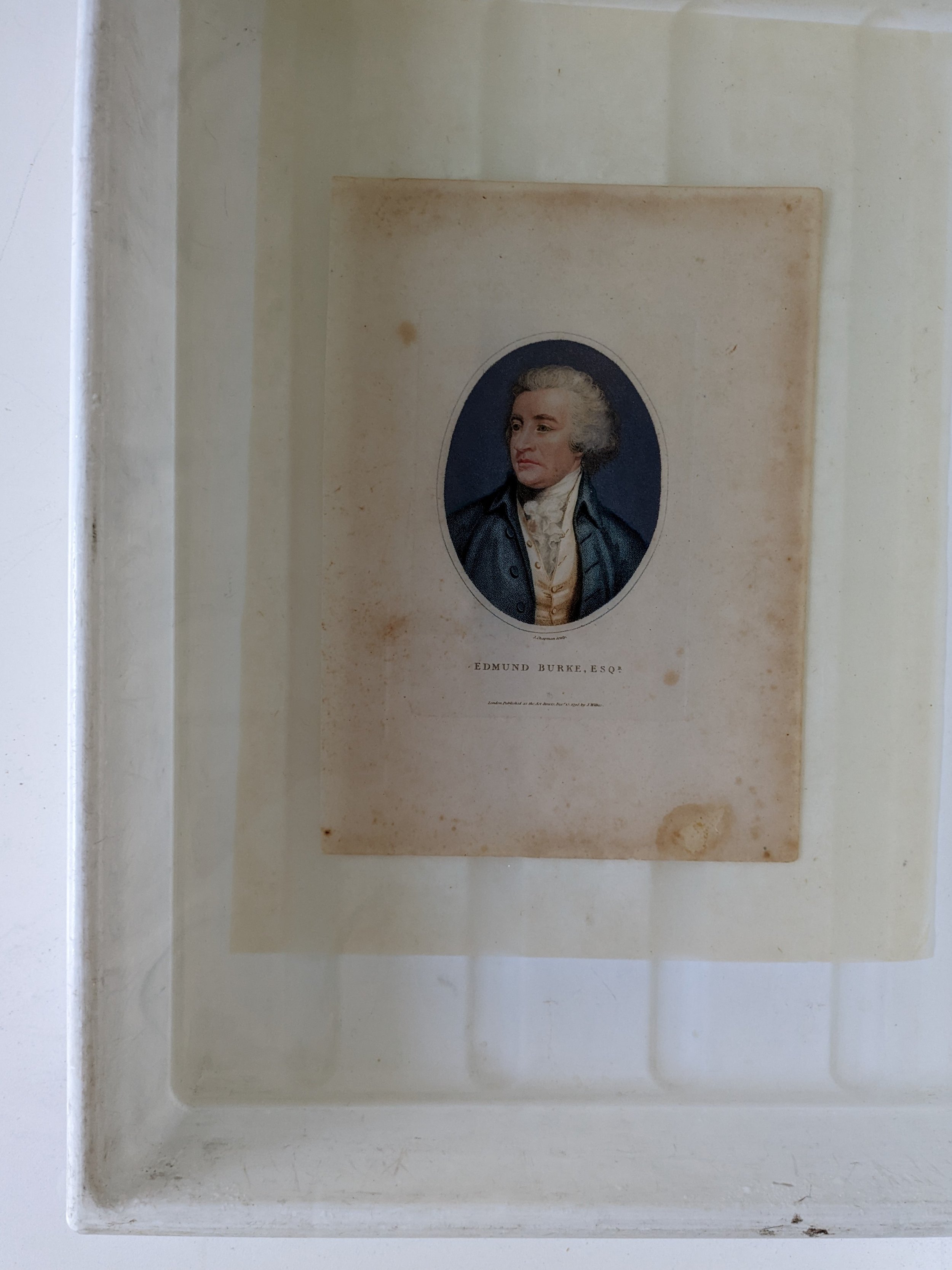

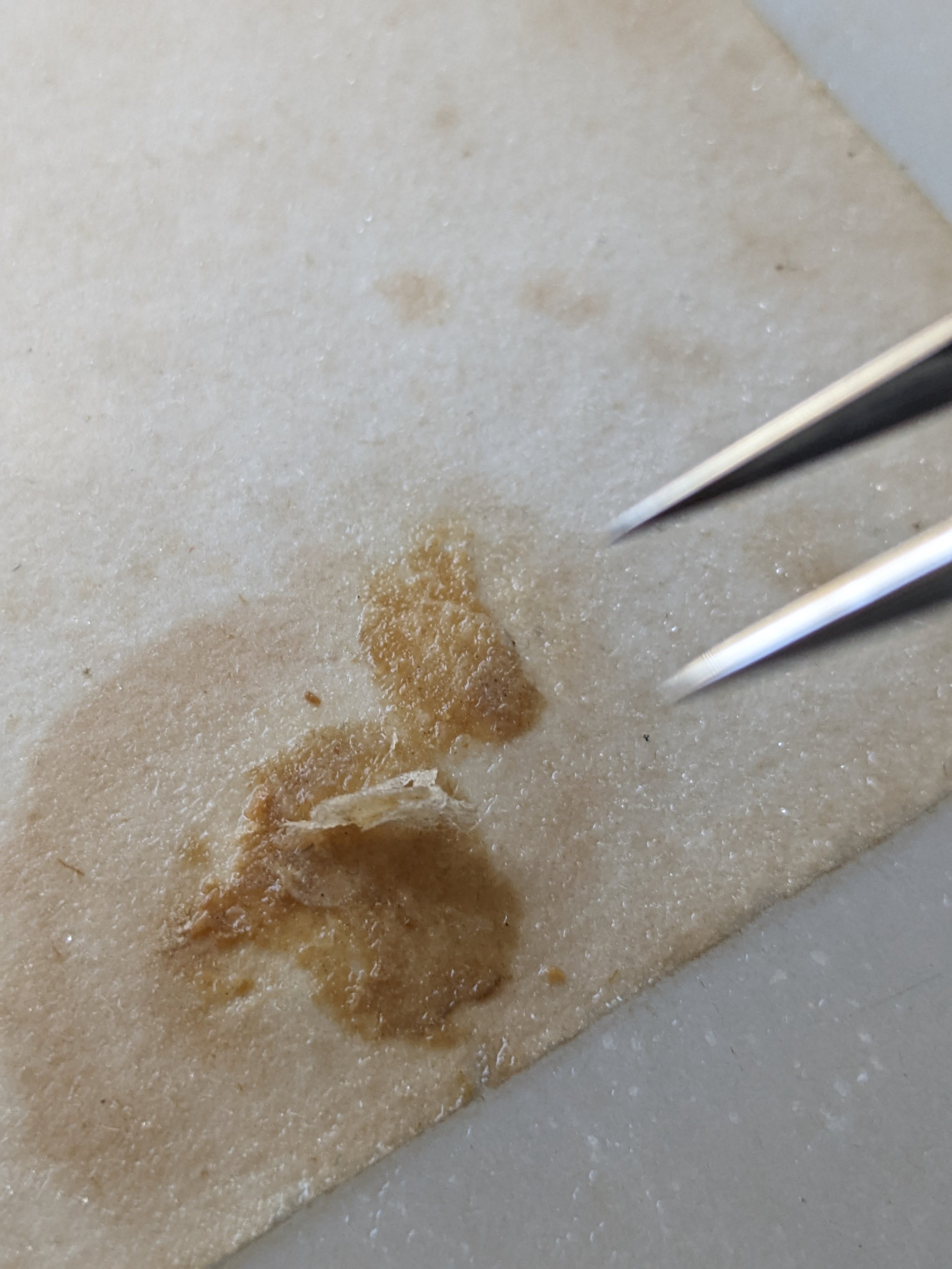
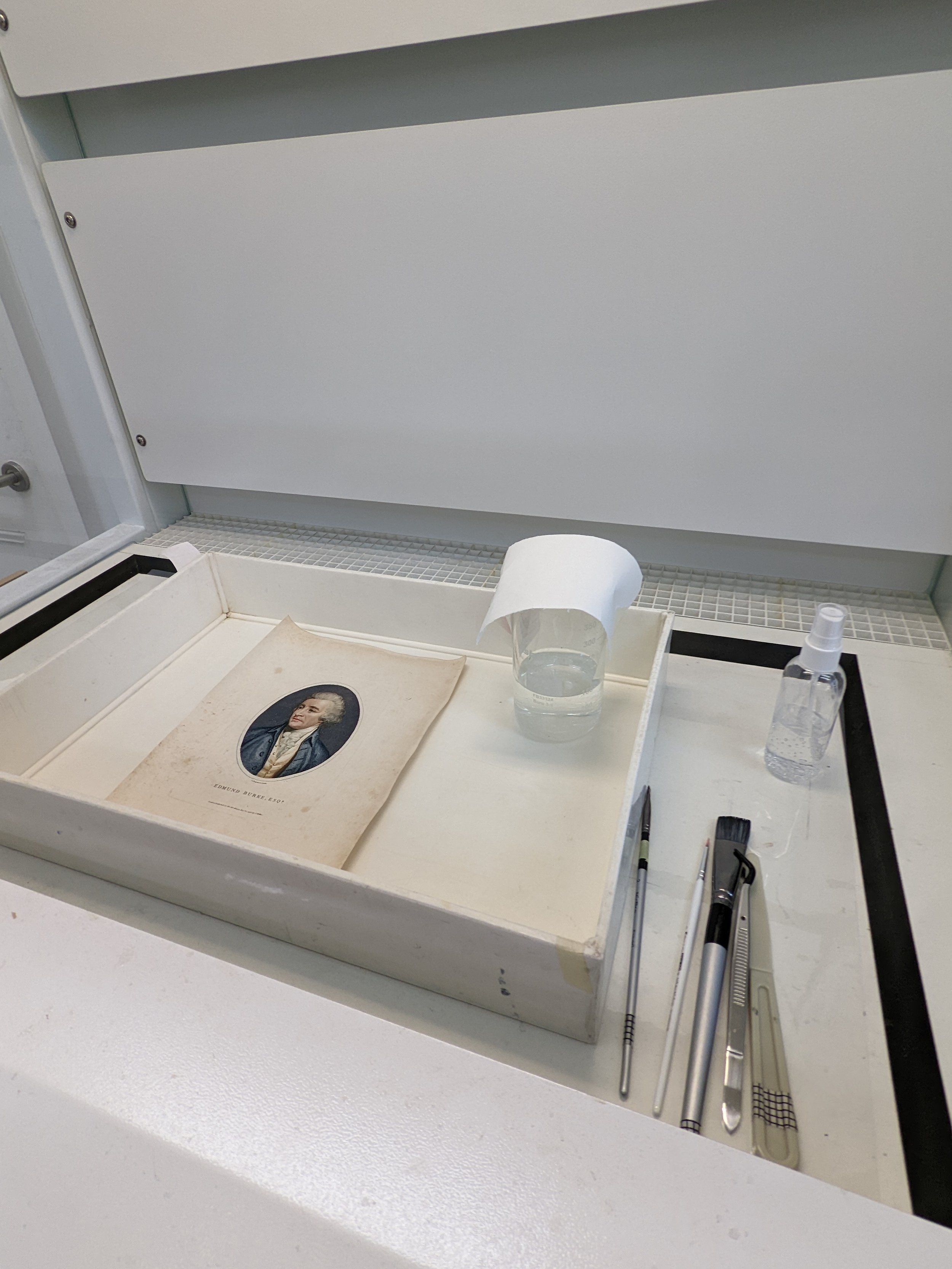
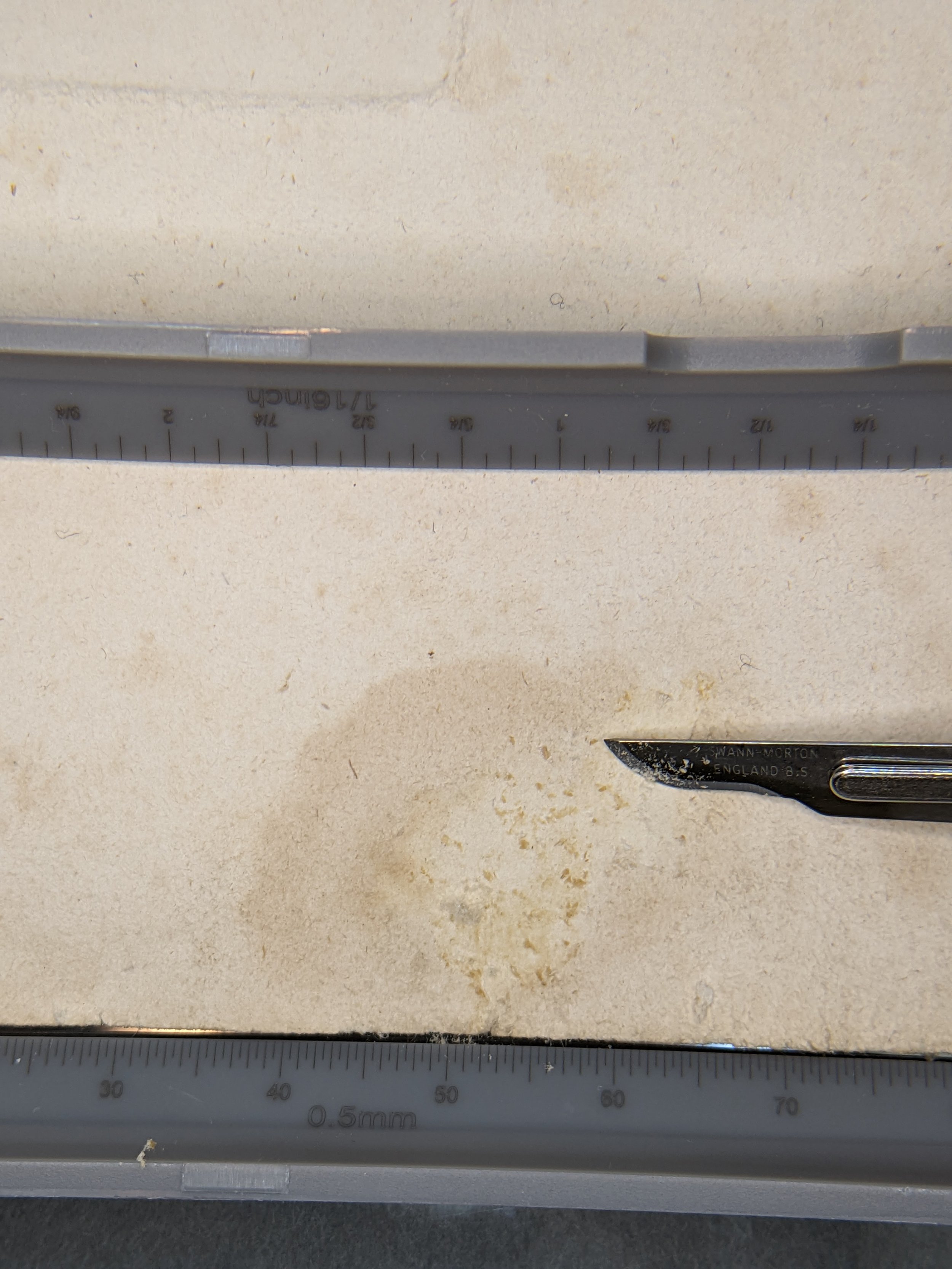
Before & After Photos
